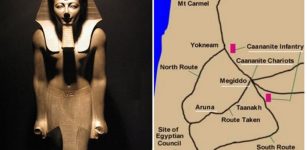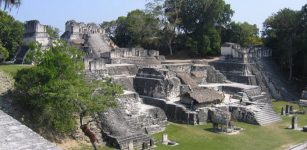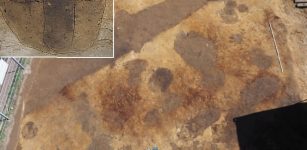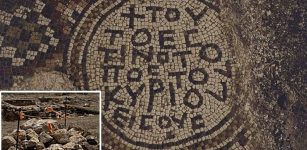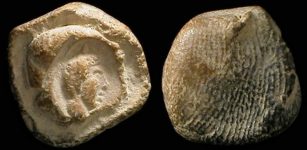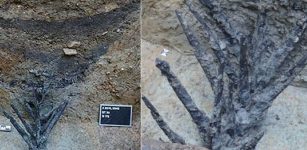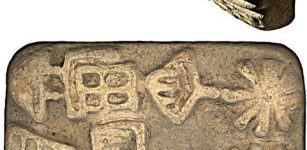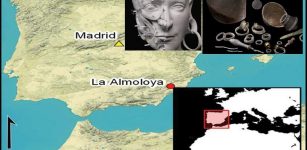Acheulian Culture Of Ethiopian Highlands And Their Prehistoric Tool Selection To Make Society’s Life Easier
Conny Waters - AncientPages.com - Early humans in the Ethiopian highlands selected specific rocks for tool-making purposes as far back as 1.5 million years.
Now, an international team of researchers focuses on this important subject of this early society's practices.
The nature and suitability of stone tools is investigated and evaluated through experimental tests on a long bone in the TraCEr laboratory (left) and (top right). Bottom right: map with the location of the study objects (Melka Wakena). © Photos by Eduardo Paixão, map by Tegenu Gossa
This ancient practice reflects an advanced level of cognitive ability and environmental adaptation among these early hominins, indicating their capacity for strategic resource utilization and technological innovation.
The findings of the team, as published in the journal PLOS ONE, offer valuable insights into the cognitive capabilities and technological expertise of our ancestors.
Melka Wakena is a significant prehistoric site complex situated in the highlands of Ethiopia. It is located along the banks of the Wabe River, which also serves as an artificial reservoir. It was there, at the Melka Wakena, scientists have uncovered a diverse array of tools.
Experimental setup for the experiments on the rocks: SMARTTESTER® from Inotec AP GmbH, adapted by Walter Gneisinger in the TraCEr laboratory in MONREPOS. Copyright: Eduardo Paixão / Walter Gneisinger, : Paixão et al., 2025, PLOS ONE, CC-BY 4.0 (https://creativecommons.org/licenses/by/4.0/) © Eduardo Paixão / Walter Gneisinger / Paixão et al., 2025, PLOS ONE, CC-BY 4.0
This discovery provides valuable insights into the technological capabilities and cultural practices of early human societies in this region.
The question is: why were certain rocks chosen over others? The answer is found in the unique properties of these stones. By employing cutting-edge methods, such as robotic experiments and high-resolution imaging techniques, the team was able to unravel this intriguing question.
The analyses revealed that the people of that era deliberately aimed to achieve a balance between the functionality and durability of their tools. This approach highlights their understanding of the importance of creating tools that were not only effective in use but also long-lasting.
"Our research shows that the material properties of stones - such as suitability, quality and durability - were crucial for selection by early hominins," explains study leader Dr. Eduardo Paixão from the University of Algarve, Portugal. He also added that these ancient people understood their environment precisely and made conscious decisions.
The rocks were then scanned (A) and examined under a microscope (B) to make the effects of the impacts visible (B). The impact points are also visible to the naked eye (D). © Eduardo Paixão / TraCEr / Paixão et al., 2025, PLOS ONE, CC-BY 4.0
Dr. João Marreiros, head of the TraCEr laboratory, additionally explains that "the conscious selection of materials influenced the surface changes of the tools. This shows that the differences in archaeological finds are not random."
According to Prof. Erella Hovers and Dr. Tegenu Gossa, who led the excavations at the site of Melka Wakena, their research open up new perspectives for understanding technological innovations in early human history.
This research is the result of a collaboration between the Interdisciplinary Center for Archaeology and Evolution Human Behaviour (ICArEHB) of the University of Algarve, the TraCEr laboratory and IMPALA laboratory of LEIZA in Germany and the Hebrew University of Jerusalem.
The researchers used technologies developed in the Laboratory for Use-Tracing Research and Controlled Experiments (TraCEr). This laboratory is part of the Archaeological Research Centre and Museum for Human Behavioral Evolution MONREPOS, a facility of the Leibniz Centre for Archaeology (LEIZA).
Paper
Eduardo Paixão et al, Exploring early Acheulian technological decision-making: A controlled experimental approach to raw material selection for percussive artifacts in Melka Wakena, Ethiopia, PLOS ONE (2025). DOI: 10.1371/journal.pone.0314039
Written by Conny Waters - AncientPages.com Staff Writer







